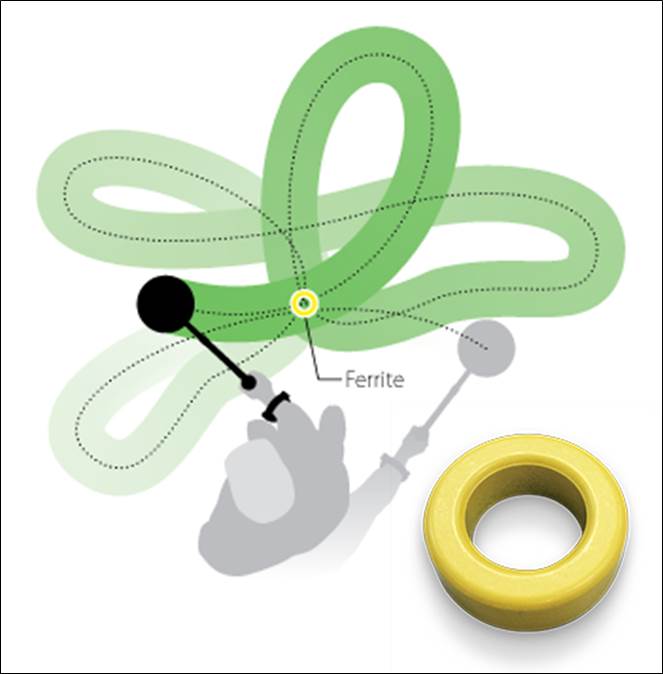As most of you have read, by now, Minelab have rolled out an advanced method of ground balancing the GPZ 7000 using a "Dust Iron" Ferrite.
This was mainly done to help people deal with saturable ground conditions where the saturation signal is impacting on the GB tracking algorithm, especially during the "Walk Sweep" start-up process, but also while generally detecting when people go from non-variable ground to variable saturable ground.
The ‘Octopus’ sweep over the "Dust Iron" Ferrite is a good way to get a very good ground balance from start-up, but operators also need to be aware that if they are needing to use the "Dust Iron" Ferrite, then they should also check their ground balance with the Ferrite on the ground regularly after that point, as the conditions that required its use in the first place will also require its use every time the Ground Balance needs adjusting via the Quick-Trak button.

I usually find once the initial ‘Octopus’ sweep has been performed it’s ok to just place the "Dust Iron" Ferrite on the ground (do not drop or throw as they are brittle) and just sweep the coil over the Ferrite as you trigger the Quick-Trak button, passing over it in a lazy loop for 3 to 5 seconds, or until you are satisfied the detector is correctly ground balanced.
If the ground you are working is causing the "Dust Iron" Ferrite to make a signal on your detector when you’re checking it periodically, then I highly recommend you place the detector in Manual Ground Balance mode and detect with a fixed GB. This will then prevent the saturation signals and salt signals from impacting on the Ferrite balance of the detector. In this instance you can then just detect as per normal and when you feel the Ground Balance seems out, place the Ferrite on the ground and perform the ‘Lazy Loop Octopus’ sweep until the detector is balanced. Normally the conditions described above are more noticeable when using Difficult and Severe Ground Type modes because the saturation signal is generally associated with very high mineralisation. Difficult and Severe are more ‘forgiving’ in areas of high mineralisation and ground variations so will require less frequent adjustments to the Ground Balance.
When in Manual GB operators will also get a better feel for maintaining the correct coil sweep height as the saturation signal will not alter the GB setting. This allows the coil to be brought right to the surface of the ground without adversely affecting the tracking algorithm (a handy trick I use all the time on the GPZ 7000 in difficult ground), if you listen to the threshold as you bring the coil to the ground you will soon learn the safe swing height of the coil to keep above the saturation signal.
I also highly recommend operators get into the habit of placing the detector in Manual Ground Balance mode when digging targets to avoid ‘throwing the GB out’ if the pick comes near the coil during the digging process. This is easily done by configuring the User Button to select Ground Balance Mode and then select Manual.
In Summary: If the ground is upsetting your detector due to saturation signals then use the "Dust Iron" Ferrite and the ‘Octopus’ sweep method at start-up and check the GB regularly. If the constant exposure of saturation signals and salt signals are still upsetting the ground balance where you can clearly hear the Ferrite when you are periodically checking, then I highly recommend you select Manual GB mode to prevent the saturation and salt signals adversely affecting the ground balance of your GPZ 7000.
Jonathan Porter
of 1




















Comments
To make comments you must be logged in, please note comments will not display immediately due to moderation